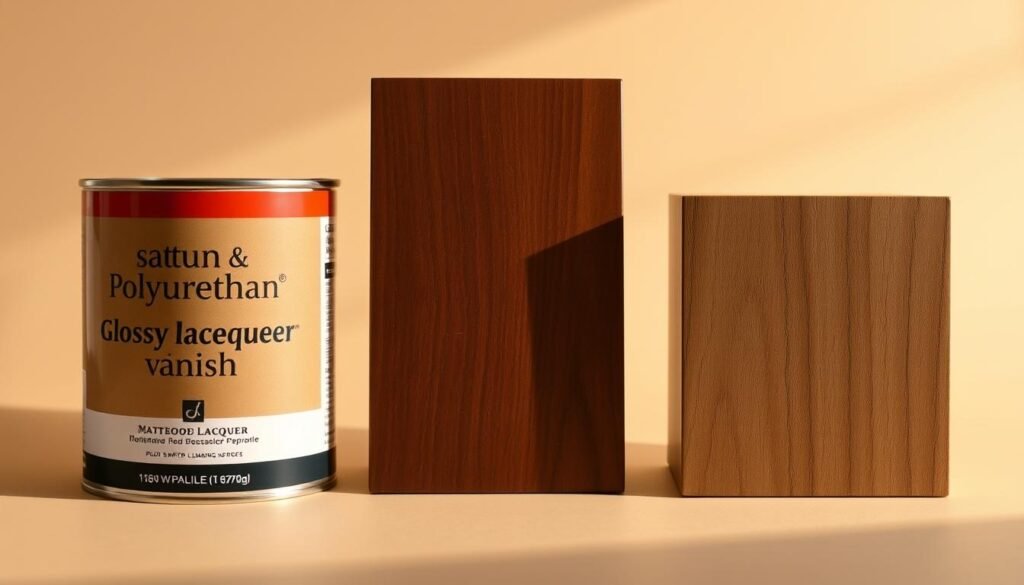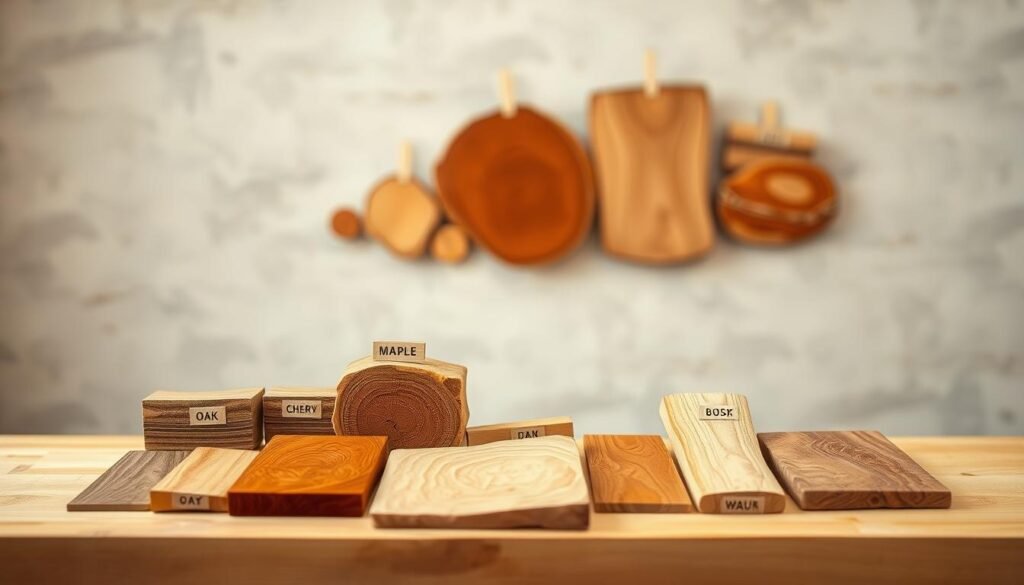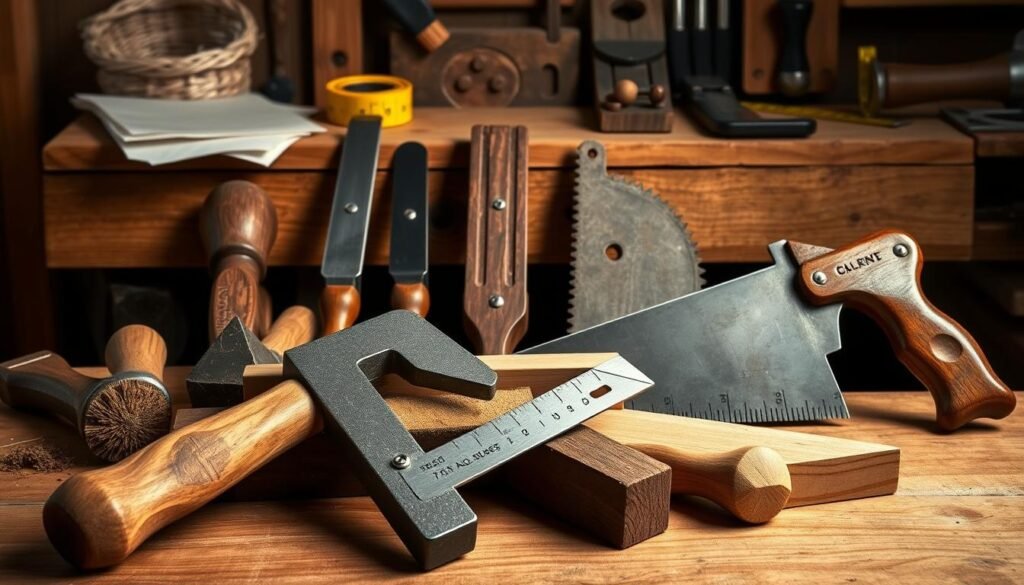Knowing about wood grain is key for woodworking fans. It affects the quality and look of your work.
Finding the right lumber can feel like a big task. But, with the right info, you can pick the perfect board for both strength and beauty.
In this detailed guide, we’ll explore why wood grain matters. We’ll also cover how it forms and how to pick the best board for your DIY project.
The Importance of Understanding Wood Grain
Understanding wood grain is key for any woodworking project. It’s not just about looks; the grain direction affects the wood’s durability and stability. Wood grain impacts how the wood expands, contracts, and reacts to changes in the environment over time.
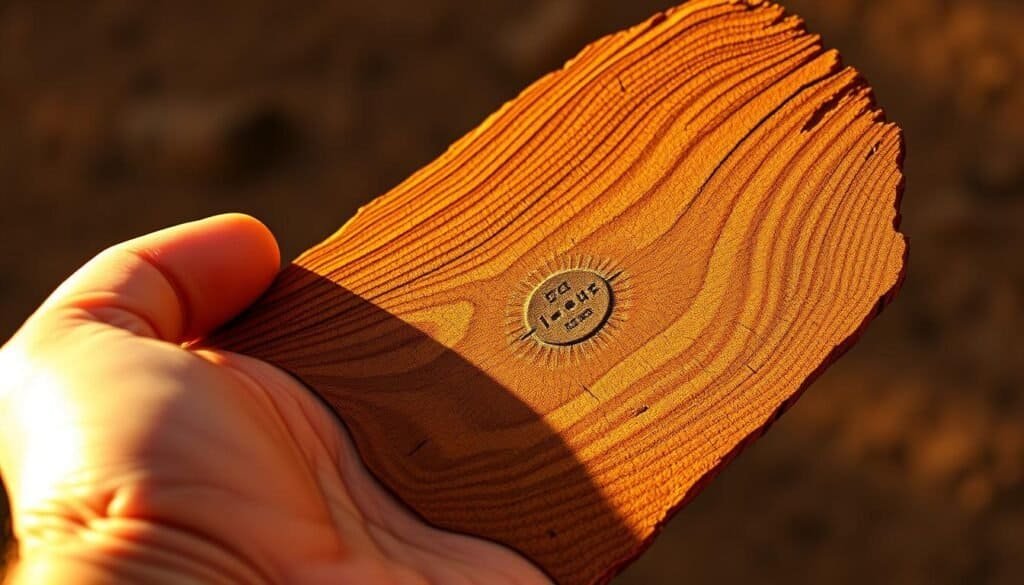
When picking lumber, knowing the wood grain direction is critical. It helps predict how the wood will act, keeping it stable and looking good. For example, some woodworking methods need a specific grain direction to work right.
Reading wood characteristics, like grain patterns, gives clues about the wood’s quality and uses. Woodworkers can make better choices, improving their projects’ quality, by understanding these traits.
In short, knowing about wood grain is vital for both the wood’s strength and its looks. It lets woodworkers use the right techniques, making sure their work lasts and looks great.
The Science Behind Wood Grain Formation
Wood grain texture comes from the complex growth of trees. Trees grow in unique patterns, shaped by their environment and genetics. This leads to the wide variety of wood grain textures we see.
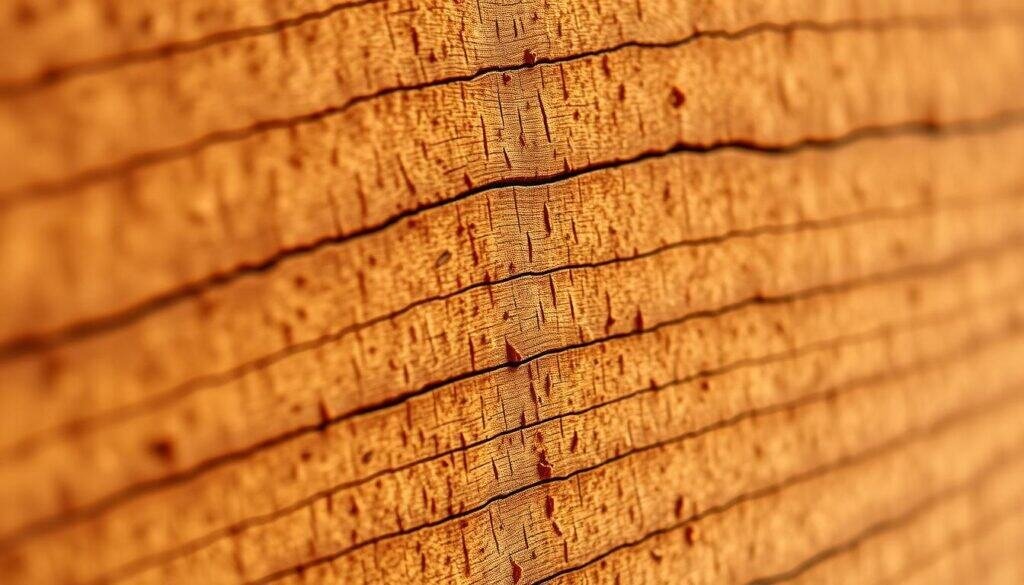
Wood grain is not just beautiful; it also tells us about the wood’s qualities. Knowing how wood grain forms helps us appreciate wood’s natural beauty. It also guides us in choosing the right lumber for our projects.
The Role of Tree Growth in Grain Formation
Tree growth is key in forming wood grain. Climate, soil, and sunlight affect how trees grow and their grain pattern. For example, trees in cold areas might have more defined grain due to seasonal changes.
Understanding tree growth helps us work with wood’s unique traits. This knowledge is vital for achieving the best results in woodworking.
Types of Wood Grain Patterns You Should Know
Knowing the different wood grain patterns is key to picking the right lumber. Each type of wood has its own grain patterns. It’s important to recognize these to choose the best boards.
There are many common wood grain patterns. Straight grain is linear and consistent. It’s simple and easy to work with. Figured grain patterns, like bird’s eye or fiddleback, are more complex and unique. They’re great for projects where looks matter most.
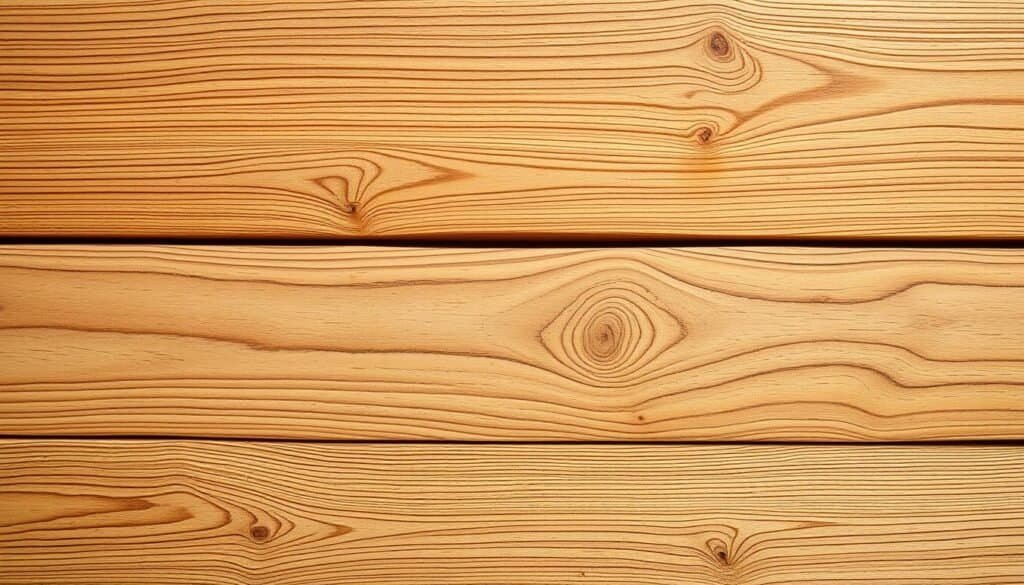
When picking lumber, think about what your project needs. Straight grain is good for a classic look. Figured grain adds elegance or uniqueness.
Wood grain patterns also affect durability and workability. Some patterns may warp or crack more. Knowing the different patterns helps you choose the best boards for your projects.
Understanding wood grain patterns helps you pick the perfect lumber. This ensures your project looks and feels great.
How to Read Wood Grain and Select the Perfect Board
Learning to read wood grain is a must for woodworkers. It helps find the best boards for your projects. Knowing wood grain characteristics is key to picking the right lumber.
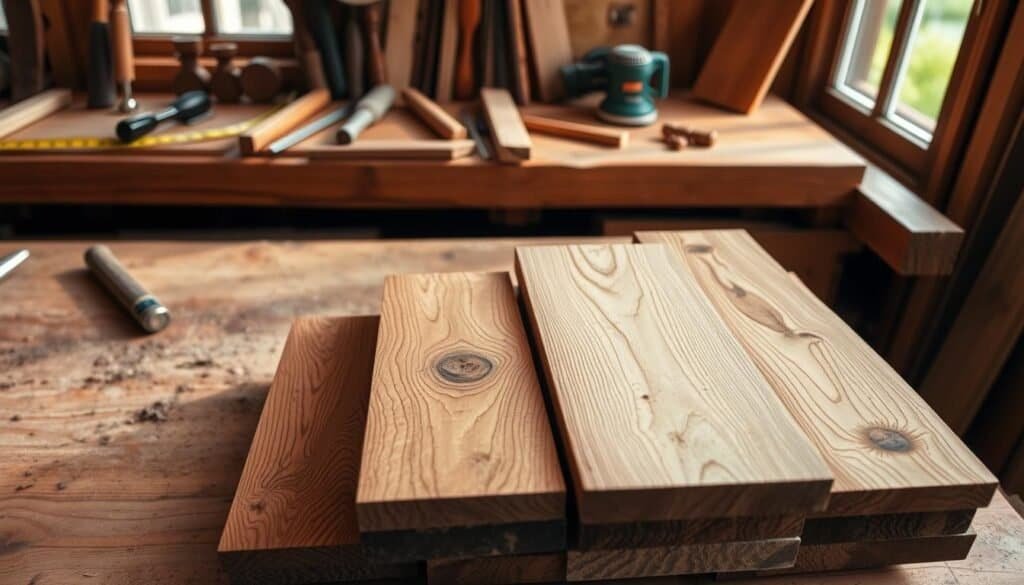
When checking wood grain, look out for defects like knots, cracks, and warping. These can harm your project’s look and strength.
It’s also important to understand grain direction. The direction of the grain affects your project’s stability and durability. Cutting with the grain usually means a smoother finish and less chance of splintering.
When evaluating lumber quality, consider the grain pattern, density, and moisture content. A top-quality board has a consistent grain, the right density, and suitable moisture for your project.
By learning to read wood grain, you can pick boards that look great and meet your project’s needs. This skill ensures your woodworking projects are both beautiful and long-lasting.
Decoding End Grain: What It Reveals About Your Board
Looking at the end grain is key to judging lumber quality. It shows the wood’s inside structure, telling us about its density and stability.
The pattern on the end grain tells us about the wood’s grain direction. This is important for knowing how the wood will act when processed. For example, a straight grain means the wood is likely to be more stable. But an irregular pattern might mean it could warp or crack.
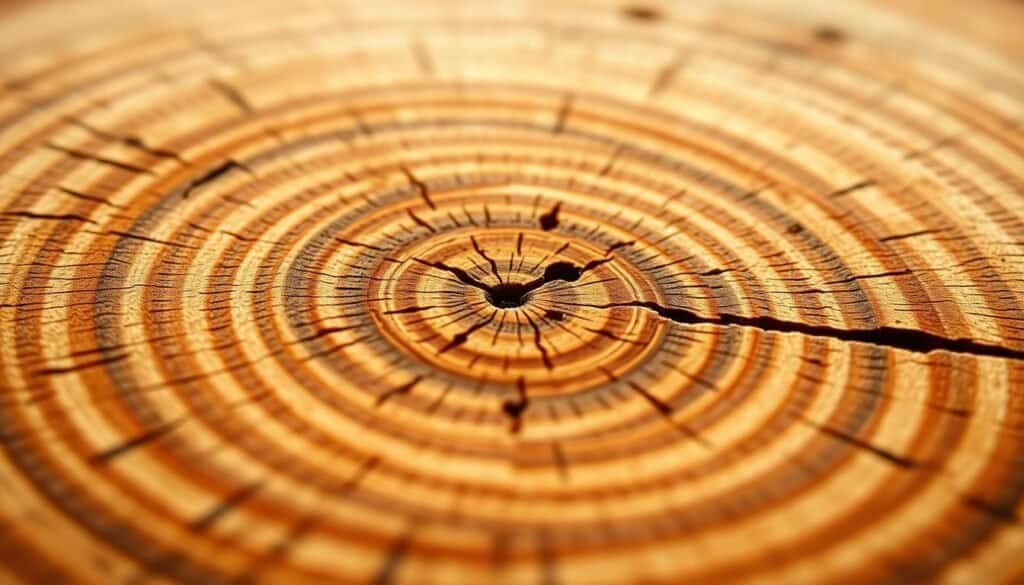
Woodworkers can make better choices by studying the end grain. It’s not just about looks; it also tells us about the wood’s strength and how it might change size.
For projects needing precision and stability, like making furniture or flooring, understanding the end grain is vital. By figuring out the end grain, craftsmen can guess how the wood will behave over time. This helps them create pieces that last longer and look better.
Grain Direction: Why It’s Crucial for Your Project
Grain direction is key in woodworking. It can greatly affect your project’s stability. Knowing the wood grain direction is vital for making your woodwork last longer.
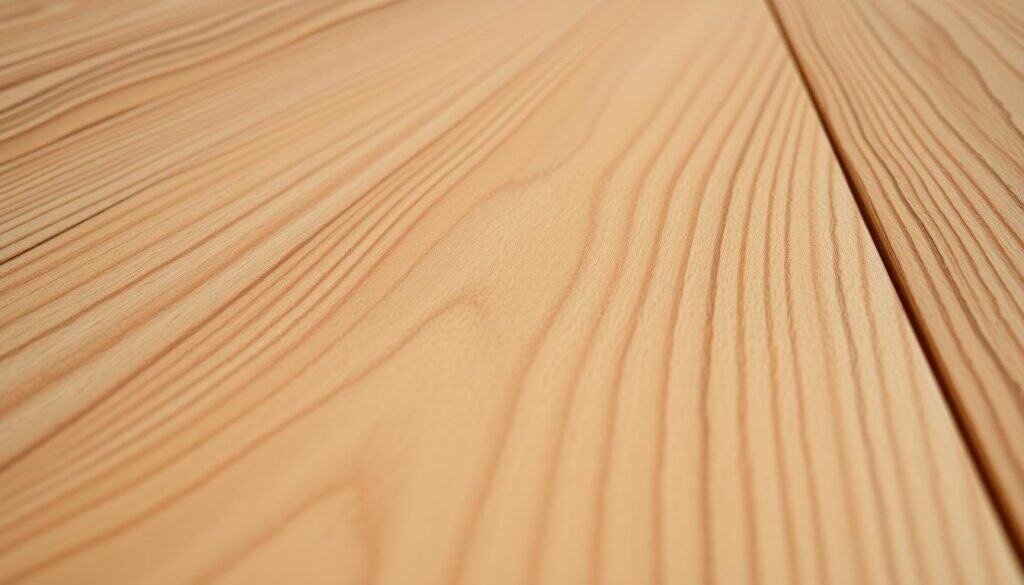
Proper alignment of wood grain improves stability. This reduces the chance of warping or cracking. On the other hand, ignoring grain direction can cause problems like uneven shrinkage and project failures.
To ensure wood stability, think about grain direction early on. Look at the wood grain pattern and align it to avoid issues. For example, aligning grain with the longest dimension of a tabletop can prevent warping.
Understanding grain direction also helps predict wood behavior over time. This way, you can prepare for and solve problems, making your project better and longer-lasting.
Common Wood Defects and How to Spot Them
When you’re checking lumber, it’s key to spot common wood defects. These can mess up the quality and how long your project lasts. Issues like knots, checks, and warping can harm both the look and strength of your work.
Knots are a common problem in lumber. They happen when branches are cut through during milling. Some knots can make your project unique, but others might be loose and cause problems when you finish it. Look for circular or oval shapes that stand out in color or texture from the rest of the wood.
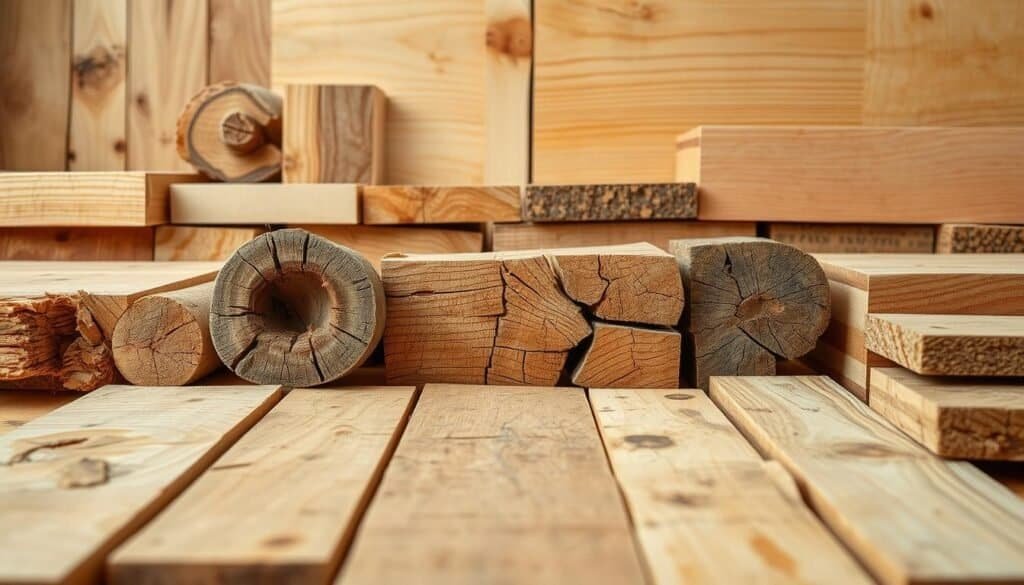
Checks are small cracks or splits in the wood, usually from drying too fast. They can be a big problem, so it’s important to check for them. Look closely, but mainly at the ends of boards where checks are more common.
Warping, like twisting or bowing, happens when wood dries unevenly. This causes it to bend. To check for warping, lay the board flat and see if it stays that way. If it doesn’t, it might be warped.
Knowing about these common wood defects helps you choose better lumber. This way, you can make sure your woodworking projects turn out well and last a long time.
Popular Wood Types and Their Distinctive Grain Characteristics
Popular wood types have unique grain patterns that affect their use in woodworking. Knowing these patterns helps choose the right wood for projects.
Oak wood is famous for its strong ring pattern and rough texture. Its grain adds strength and durability to woodwork. White oak and red oak have different grain patterns.
Maple wood is loved for its smooth grain and light color. It’s perfect for projects needing a clean look. Maple’s grain is usually straight and fine.
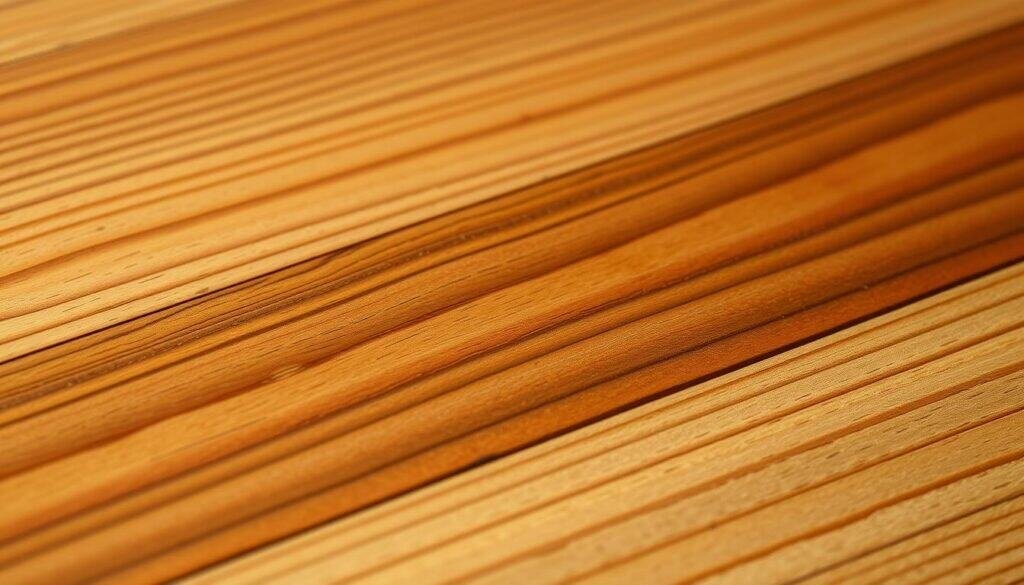
Walnut wood is known for its dark color and interesting grain. Its grain can be straight or irregular, adding beauty to woodwork. Walnut is used in luxury furniture and other high-end projects.
Cherry and pine are also popular for their unique grain patterns. Cherry has a fine grain and a rich color. Pine has a knotty, rustic look.
Knowing the grain patterns of wood types helps woodworkers pick the best lumber. This knowledge ensures their projects look and function as desired.
Artistic Appreciation of Wood Grain
Wood grain can make your woodworking projects truly special. It adds character and elegance to any piece. This makes your work stand out.
Wood grain is more than just pretty. It tells a story with its patterns and textures. Each project is unique because of this.
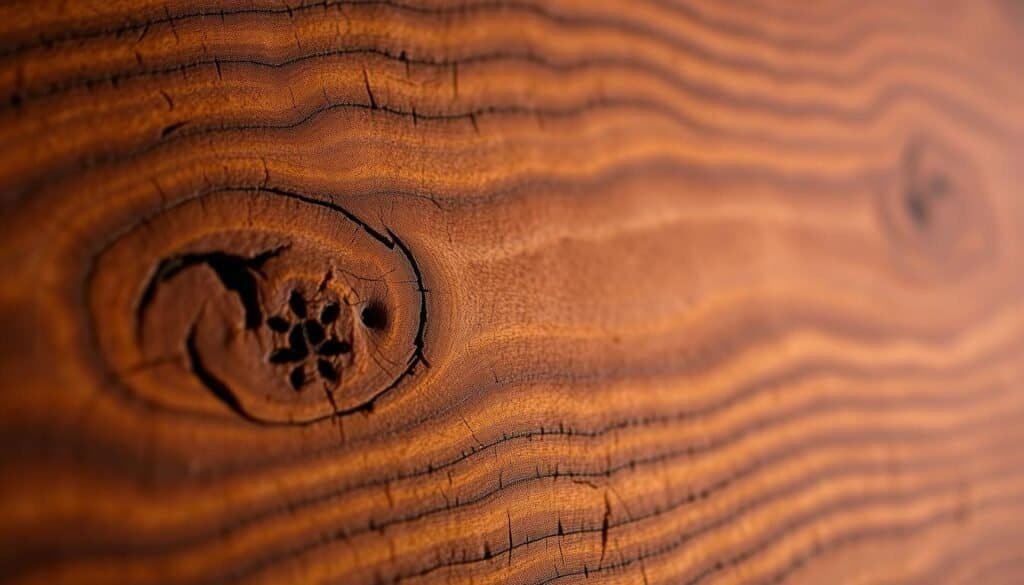
To use wood grain well, you need to understand its beauty. Choose boards with striking patterns. This way, your projects will be both useful and beautiful.
As you learn to appreciate wood grain, you’ll see its value. You’ll make projects that show off the wood’s natural beauty. This makes your work truly special.
Wood grain’s beauty inspires creativity and adds a natural touch to your work. Embracing this can elevate your woodworking. You’ll create pieces that are both beautiful and meaningful.
Moisture Content and Its Effect on Wood Grain
The link between moisture content and wood grain is key in woodworking. Moisture content greatly impacts wood stability and behavior. It can cause warping, cracking, or other damage if not managed right.
Wood grain stability depends a lot on moisture content. High moisture makes wood expand, while low moisture causes it to shrink. This can lead to uneven surfaces or cracked boards.
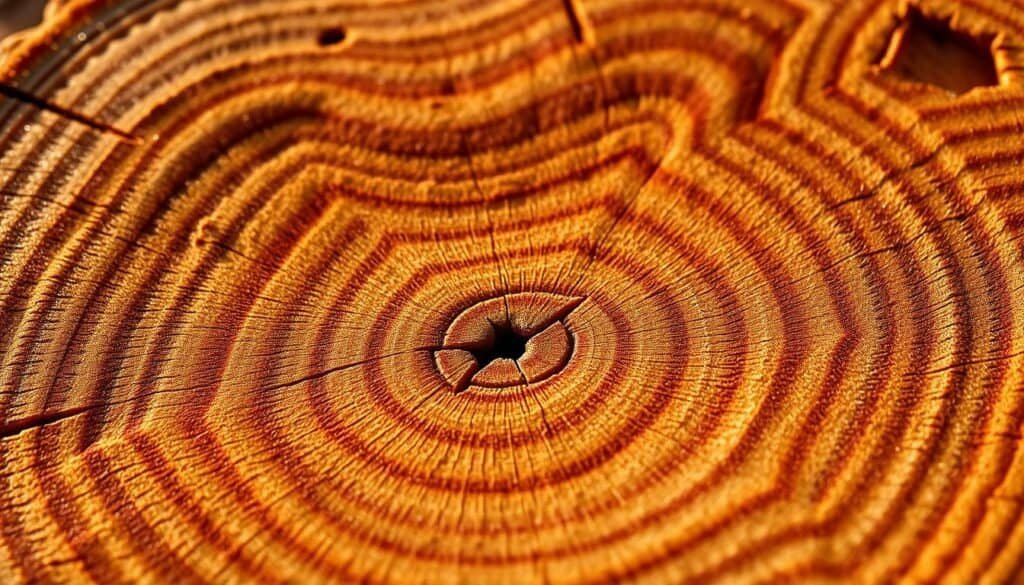
To avoid these problems, understanding and controlling wood moisture is vital. This means choosing wood with the right moisture levels for your project. It also means drying or conditioning the wood for its environment.
Effective moisture management helps woodworkers avoid wood grain instability. This ensures their projects stay strong and look good for a long time.
Selecting Boards for Specific Projects
The success of a woodworking project depends on choosing the right boards. Each project has its own needs, and picking the correct lumber is key. This ensures the project turns out as planned.
Think about the project’s load-bearing needs. For example, a shelf needs lumber that can hold the weight of items. Durability is also important, for projects that face the outdoors or get a lot of use.
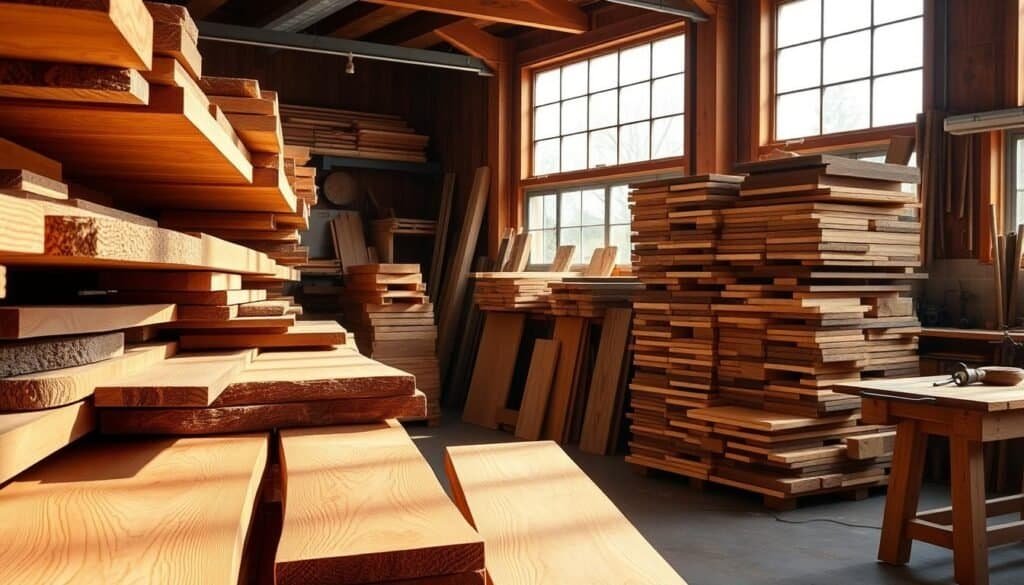
The look of the wood matters too. The grain, color, and texture can change how your project looks. For a project that’s meant to be eye-catching, you might choose lumber with a special grain.
To make the best choice, weigh these factors against your project’s needs. This way, your project will not only work well but also last a long time.
In the end, carefully considering your project’s needs is vital for picking the right lumber. By doing this, you’ll be on your way to a successful and rewarding woodworking project.
Tools That Help You Assess Wood Grain
Woodworkers use many tools to check wood grain. These tools help them pick the right lumber for their projects.
A moisture meter is key. It shows how wet the wood is. Too wet can cause warping or cracking.
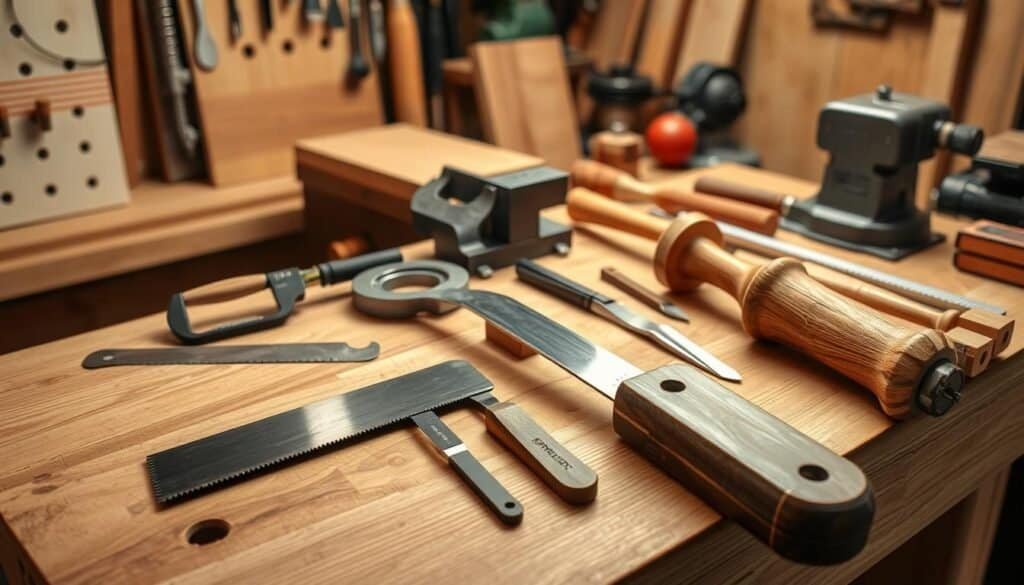
Grain direction indicators are also important. They show the wood grain’s direction. This helps avoid cuts that might damage the wood.
Other tools like lumber graders and scanners help too. They spot defects and choose the best lumber.
Using these tools makes woodworkers’ projects better. They get professional results.
Lumber Yard Strategies: Getting the Best Boards
Choosing high-quality lumber at a lumber yard needs knowledge, strategy, and detail. First, understand what you want in terms of wood type, grain pattern, and quality.
When checking lumber, look for straight boards without warping or twisting. Also, check the ends for damage or rot. The grain direction and pattern are key to your project’s look.
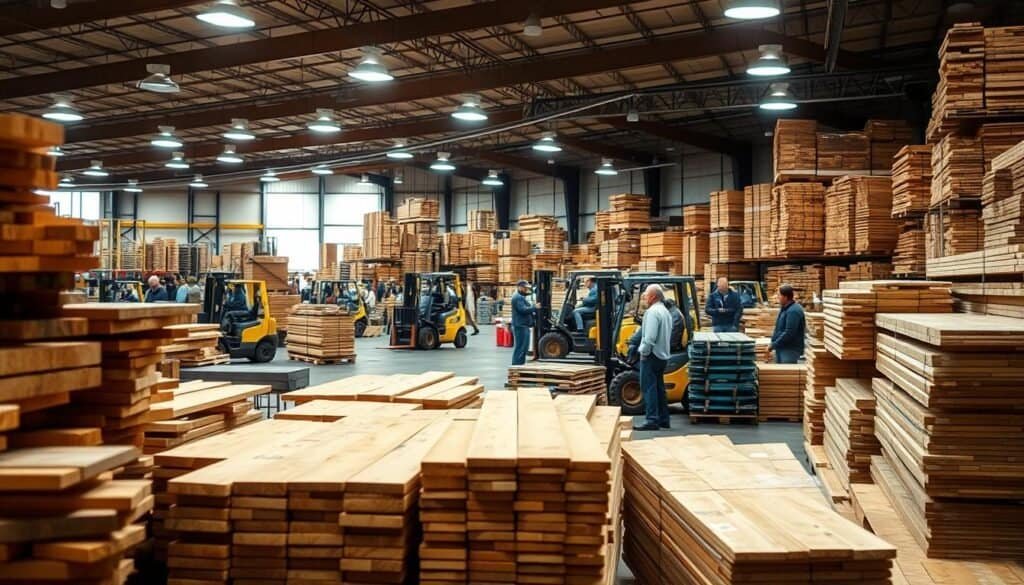
Talking to suppliers is also important. Building a good relationship can get you better prices and quality lumber. Don’t hesitate to ask for discounts or to inspect the lumber first.
By using these strategies, you’ll find the best lumber for your projects. Success comes from being informed, prepared, and knowing what to look for.
Working With Challenging Grain
Working with tough wood grain can be a real challenge. But, with the right methods, you can overcome it. Some wood grain patterns are harder to handle than others. They need special strategies to manage well.
To keep the wood stable and avoid mistakes, knowing its grain is key. You need to identify the wood type, its moisture, and any natural flaws. This knowledge helps you plan and achieve the finish you want.
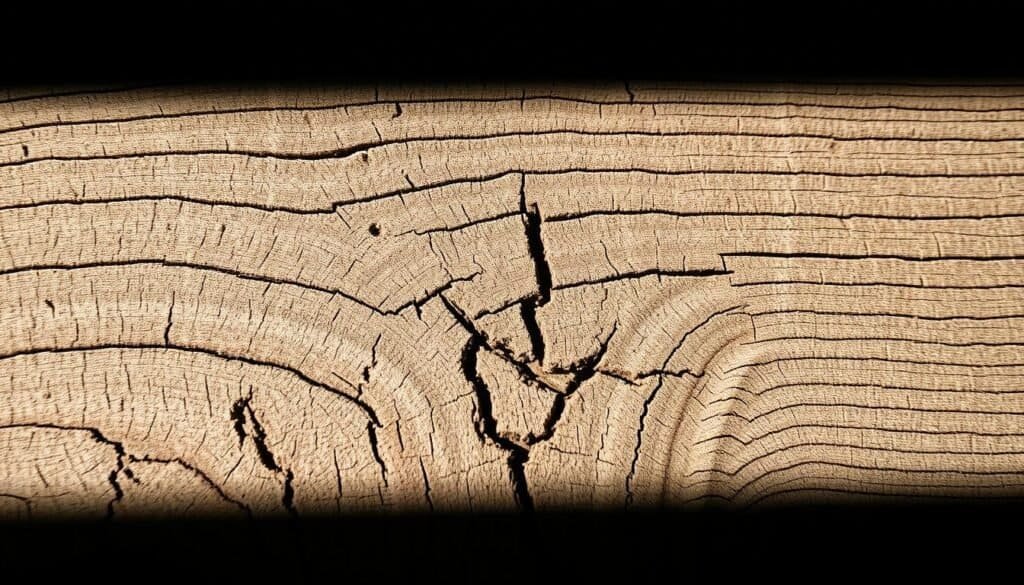
Using the right tools and equipment is vital for managing tough grain. Sharp, quality blades and bits are essential. So are specialized machines for handling hard wood grain. The right finishing techniques, like a stabilizing coat or specific finishes, can also improve the wood’s look and hide flaws.
Learning to work with challenging grain boosts your woodworking skills. It lets you tackle even the toughest projects with confidence.
Enhancing and Showcasing Wood Grain in Finished Projects
To truly showcase the elegance of wood, understanding how to enhance its grain is essential. The finish applied to a woodworking project plays a significant role in highlighting the natural beauty of the wood grain.
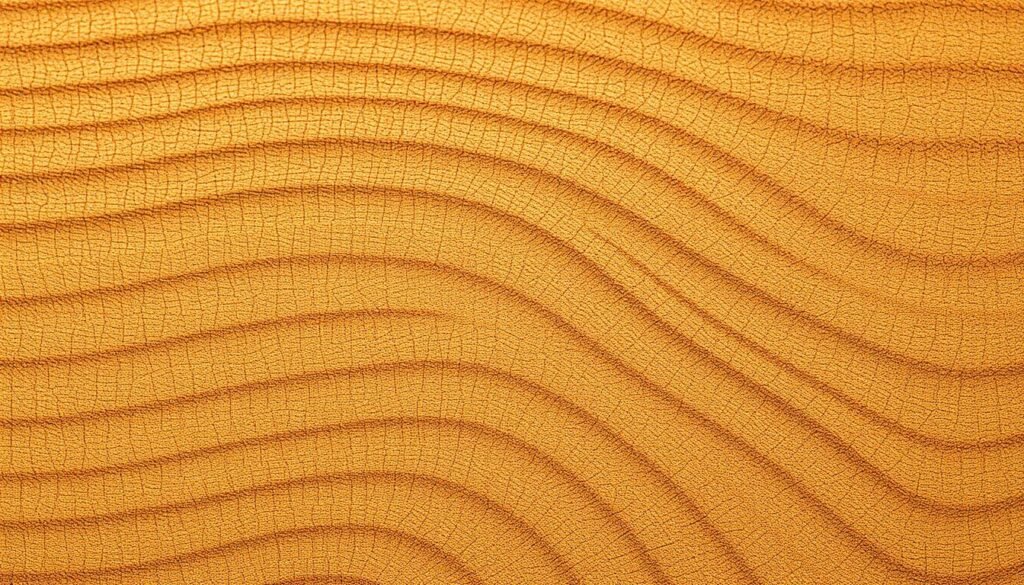
Various techniques can be employed to enhance the wood grain in finished projects. Finishing methods, such as staining, can significantly impact the appearance of the wood. Choosing the right stain and application method can accentuate the grain patterns, making the wood more visually appealing.
In addition to staining, other enhancement techniques include sanding to a fine finish, applying a wood conditioner to ensure even stain absorption, and using a clear coat to protect and highlight the grain. Each of these steps contributes to showing the wood grain in its best light.
By mastering these techniques, woodworkers can create stunning pieces. These pieces not only showcase the natural elegance of the wood but also reflect their craftsmanship. Enhancing wood grain is an art that elevates the aesthetic of any finished project, making it a focal point in any setting.
Conclusion: Becoming a Wood Grain Expert
Learning about wood grain is a journey that takes time and patience. This guide has shown you that it’s not just about technical skills. It’s also about loving the unique qualities of different woods.
By using the wood grain knowledge from this guide, you’ll get better at woodworking. You’ll make beautiful and strong pieces that show off your skills. Keep learning and trying new things to get even better at seeing the beauty in wood grain.
As you work with different woods, you’ll get better at picking the right ones for your projects. Becoming an expert in wood grain is rewarding. It makes you better at woodworking and helps you appreciate the beauty of wood even more.

